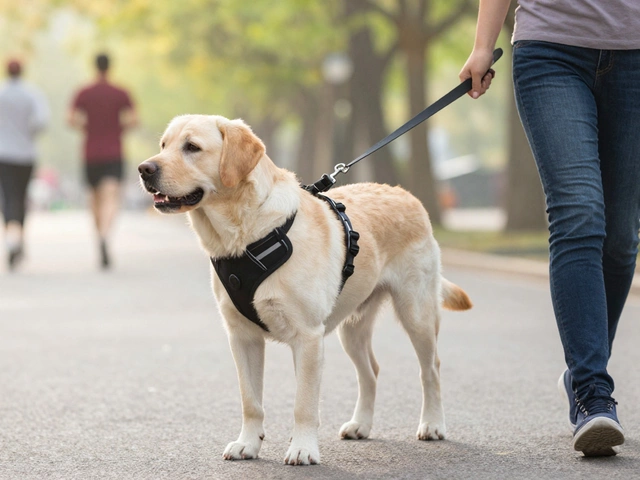Walking Dog with Collar: Simple Tips for Safe, Happy Walks
Got a new collar and wondering how to make walks smooth? You’re not alone. The right collar can keep your dog safe, but it also needs a few adjustments to avoid chafing or pulling. Below are the basics you can put into practice today.
Choosing the Right Collar
First, think about your dog’s size and neck shape. A flat nylon or leather collar works for most breeds, while a martingale is better for dogs with narrow heads. Measure where the collar will sit—usually just behind the ears—and add an inch so you can fit two fingers underneath. Too tight and the dog can’t breathe; too loose and it can slip off.
Check the hardware. A sturdy buckle or quick‑release snap makes it easy to put on and take off, especially if your pup is squirmy. If you use a tag, keep it lightweight. Heavy tags can pull the collar down and cause neck strain.
How to Walk Safely
When you’re ready to head out, start with a short leash (around 4‑6 feet). A longer leash gives more freedom but makes it harder to control sudden lunges. Hold the leash with a relaxed grip—don’t yank. If your dog pulls, stop walking. Wait until the tension eases, then resume. This teaches that pulling doesn’t get them where they want to go.
Pay attention to the collar’s position as you walk. It should stay level and not slide up toward the throat. If it does, adjust the fit before you continue. Look for signs of irritation: red spots or hair loss mean the collar is too tight or the material is rough.Mix in praise and treats when your dog walks beside you without pulling. Positive reinforcement beats punishment every time. Even a quick “good job” when they stay close reinforces the behavior you want.
Plan your route with low‑traffic streets and familiar scents. Dogs get distracted by smells, and a busy environment can trigger pulling. If you encounter a lot of stimulation, keep the leash short and focus on keeping the collar in place.
Finally, end each walk with a cool‑down. Let your dog sniff around for a few minutes and check the collar again for any rubbing. A quick wipe with a damp cloth removes dirt that could cause irritation later.
With a properly fitted collar and consistent walking habits, you and your dog will look forward to every outing. Try these steps on your next walk and notice how much smoother the experience becomes.

Is It Safe to Walk Your Dog With Just a Collar? Expert Advice and Tips
Curious if you can safely walk your dog with just a collar? This article unpacks the pros, cons, and real-world risks of using only a collar during walks. Get expert tips, surprising facts, and practical advice for keeping your dog safe and comfortable on leash. Whether you’re a new or seasoned dog owner, you’ll find everything you need to make informed choices about collars, harnesses, and walking gear. Plus, learn about common mistakes and what veterinarians actually recommend.
read more



